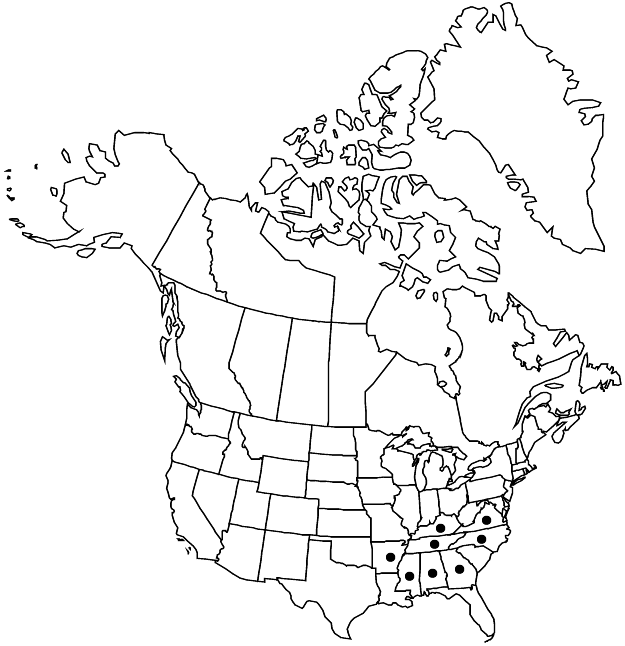Difference between revisions of "Silene ovata"
Fl. Amer. Sept. 1: 316. 1813.
FNA>Volume Importer |
imported>Volume Importer |
||
| (One intermediate revision by one other user not shown) | |||
| Line 8: | Line 8: | ||
}} | }} | ||
|common_names=Ovate-leaved campion or catchfly | |common_names=Ovate-leaved campion or catchfly | ||
| + | |special_status={{Treatment/ID/Special_status | ||
| + | |code=E | ||
| + | |label=Endemic | ||
| + | }}{{Treatment/ID/Special_status | ||
| + | |code=C | ||
| + | |label=Conservation concern | ||
| + | }} | ||
|basionyms= | |basionyms= | ||
|synonyms= | |synonyms= | ||
| Line 47: | Line 54: | ||
|publication title=Fl. Amer. Sept. | |publication title=Fl. Amer. Sept. | ||
|publication year=1813 | |publication year=1813 | ||
| − | |special status= | + | |special status=Endemic;Conservation concern |
| − | |source xml=https:// | + | |source xml=https://bitbucket.org/aafc-mbb/fna-data-curation/src/2e0870ddd59836b60bcf96646a41e87ea5a5943a/coarse_grained_fna_xml/V5/V5_400.xml |
|subfamily=Caryophyllaceae subfam. Caryophylloideae | |subfamily=Caryophyllaceae subfam. Caryophylloideae | ||
|genus=Silene | |genus=Silene | ||
Latest revision as of 23:10, 5 November 2020
Plants perennial, rhizomatous; rhizome creeping. Stems erect, usually simple, 30–150 cm, with short, dense, eglandular pubescence, sparsely so toward base. Leaves sessile, 2 per node; blade prominently 3–5-veined, ovate-acuminate, round at base, (4–)6–10(–13) cm × (20–)30–50(–90) mm, appressed-pubescent on both surfaces. Inflorescences paniculate, narrow, many-flowered, open, bracteate, pedunculate, 10–50 × 3–5 cm, densely puberulent; bracts narrowly lanceolate, 3–15 mm, apex acuminate; peduncle ascending. Pedicels ascending, recurved near apex, ca. equaling calyx. Flowers nocturnal; calyx prominently 10-veined, tubular to narrowly campanulate and 6–9 × 3–4 mm in flower, turbinate and 10–12 × 4–5 mm in fruit, narrowed proximally around carpophore, veins parallel, green, broad, with pale commissures, puberulent, sometimes with few glands, lobes triangular-acute, 2–3 mm; corolla white, clawed, claw equaling calyx, broadened into limb, limb obtriangular, deeply lobed, 7–9 mm, lobes ca. 8, linear, appendages minute; stamens slightly longer than corolla; styles 3, ca. 2 times as long as corolla. Capsules narrowly ovoid, slightly longer than calyx, opening by 3 (splitting into 6) ascending teeth; carpophore 2–2.5 mm. Seeds dark brown, reniform, 0.8–1.5 mm, shallowly tuberculate. 2n = 48.
Phenology: Flowering late summer–fall.
Habitat: Rich woods
Elevation: 1000-1900 m
Distribution

Ala., Ark., Ga., Ky., Miss., N.C., S.C., Tenn., Va.
Discussion
Of conservation concern.
Silene ovata is a very distinctive species with large, ovate, acuminate, sessile, paired leaves, and very narrowly lobed white petals. The flowers open at night and are moth-pollinated.
Selected References
None.